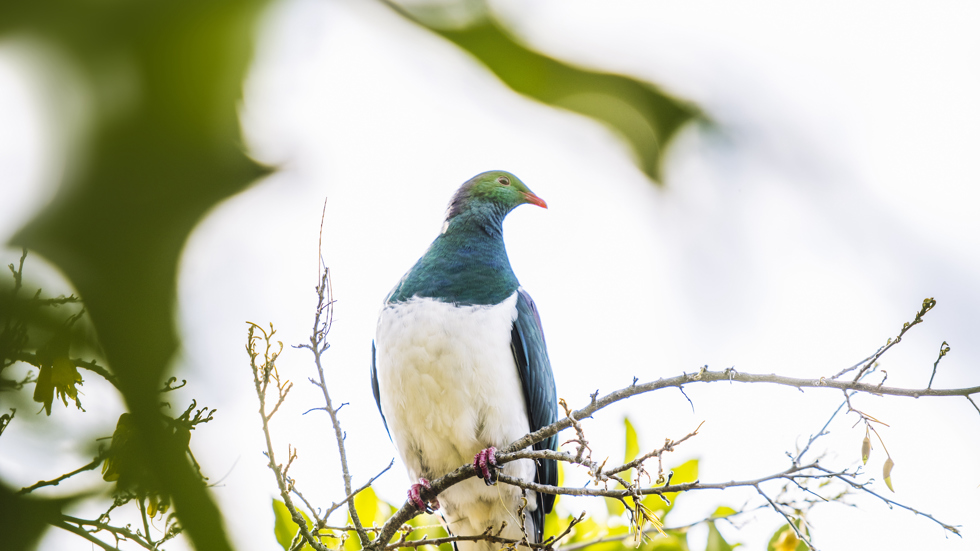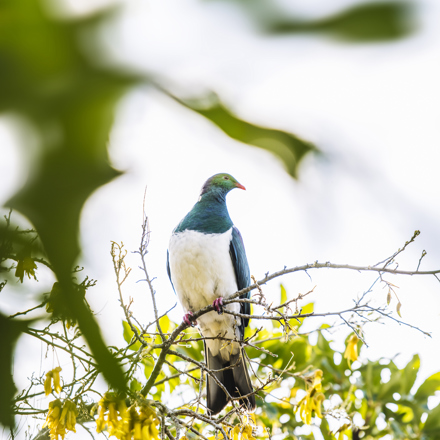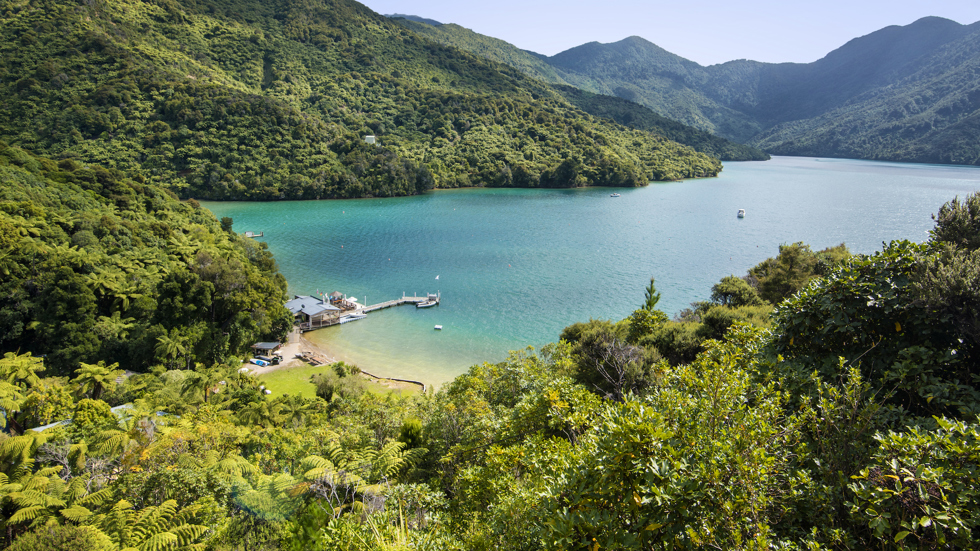The Marlborough Sounds is clad in a huge variety of vegetation, including lush sub-tropical rainforest and native flora and fauna as seen here around Endeavour Inlet.
Much of the Marlborough Sounds was cleared for farming, but a number of conservation projects are now allowing native forest to regenerate.
Punga Cove owes its name to the plentiful punga ferns (tree ferns) that thrive in this high-rainfall area of the Sounds. There are also many rimu, matai and miro trees near the coast, while further away the red beech is predominant.



















